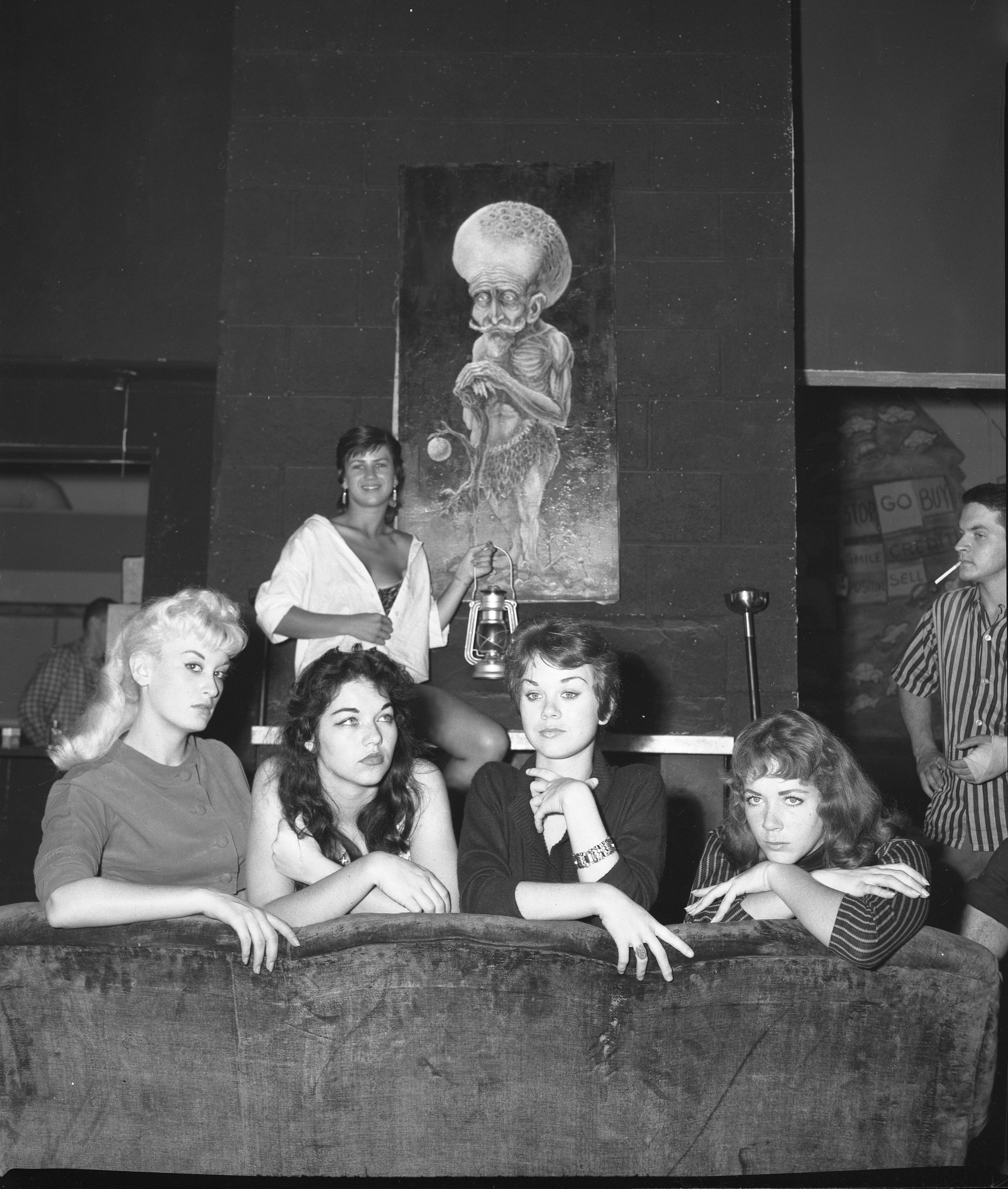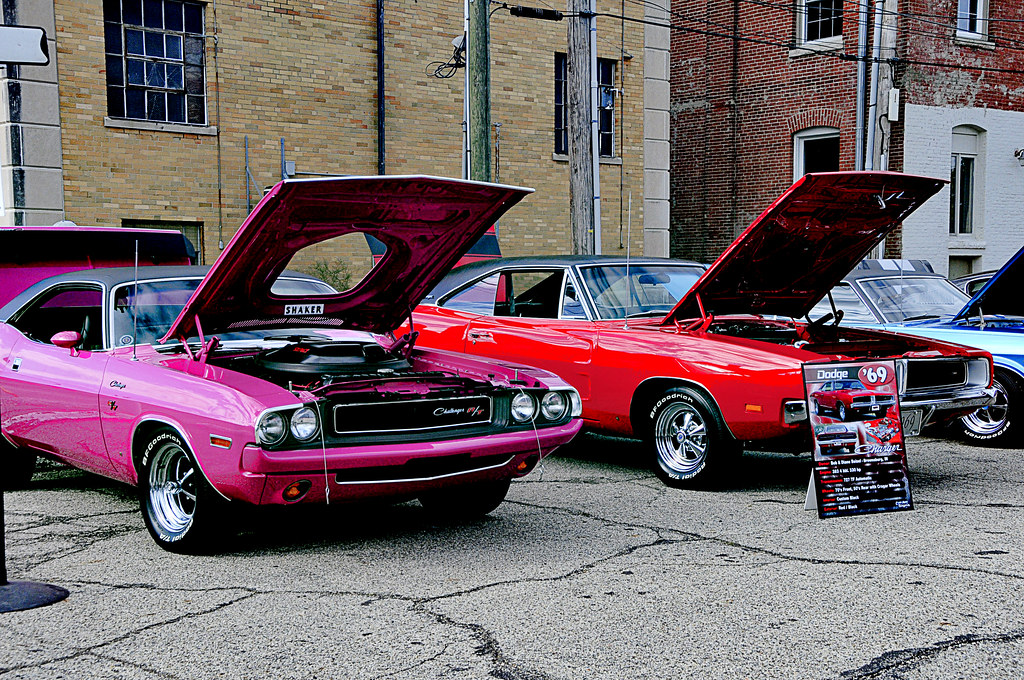
The 1950s. Just saying the decade evokes images of poodle skirts, slicked-back hair, and a certain post-war optimism that painted an idyllic picture of American life. But beneath that polished surface, the ’50s were a crucible of creativity, a dynamic period where “simple inventions” and profound cultural shifts laid down the very foundations of our modern world. It wasn’t just about what *was* new; it was about what *endured*.
Think about it: the echoes of the 1950s are everywhere, from the music we stream to the fast food we grab on the go, and even the way our cities are structured. This was a decade that truly revolutionized everyday life, introducing groundbreaking concepts and items that, at the time, might have seemed fleeting, but ultimately proved to be remarkably resilient. We’re talking about more than just fleeting fads; we’re diving into the ingenious creations and influential movements that continue to resonate and shape our contemporary existence.
Join us as we take a fascinating journey back in time to explore some of these transformative elements. These aren’t just relics of the past; they are the vibrant, dynamic threads woven into the fabric of today, proving that the ’50s weren’t just a decade of conformity, but a powerful engine of innovation that continues to propel us forward. Let’s uncover the stories behind these lasting legacies and see just how deeply they’ve embedded themselves in our collective consciousness.

1. **Pez Candies: A Pop Culture Treat That Endures**Pez candies were officially released to the public in the 1950s, and almost immediately, they became well known in pop culture. More than just a sweet treat, Pez quickly distinguished itself with its innovative, reusable dispenser, which originally resembled a cigarette lighter and was designed to help people quit smoking.
This simple yet ingenious design, quickly evolving to feature character heads, transformed a humble candy into a collectible item. The playful dispensers, with their instantly recognizable shapes and spring-loaded mechanism, created an interactive experience for consumers, especially children. This blend of confection and toy helped solidify Pez’s unique identity.
Decades later, Pez remains a beloved staple, a nostalgic icon that continues to delight new generations. The sheer variety of its dispensers, featuring everything from classic cartoon characters to modern superheroes, has fostered a vibrant collecting community. Its enduring presence is a testament to the power of a simple idea executed with a touch of whimsy, reminding us of the lasting impact of playful design.

2. **The Jukebox: The Soundtrack of a Generation**In the vibrant social landscape of the 1950s, the jukebox was particularly popular, standing as an undeniable centerpiece of public entertainment. Found in diners, malt shops, and dance halls across America, these coin-operated music machines were more than just devices; they were cultural hubs.
Jukeboxes offered an unprecedented level of personalized music selection, allowing patrons to choose their favorite tunes from a wide array of 45-rpm records. This democratic approach to music listening played a crucial role in the dissemination of new genres, giving a platform to burgeoning sounds and artists. It was the place where many first encountered the latest hits and emerging musical styles.
While the physical presence of the classic jukebox has largely faded from everyday life, its legacy undeniably lives on. The concept of on-demand music, where a listener can instantly select from a vast library, is the bedrock of modern streaming services. The jukebox pioneered the idea of a personalized soundtrack for public spaces, a concept that continues to evolve with today’s digital technologies.

3. **Rock and Roll Music: The Birth of a Cultural Revolution**The 1950s are universally recognized as the true birth of the rock and roll music genre, a seismic shift that redefined popular culture. Led by electrifying figures such as Elvis Presley, Chuck Berry, Jerry Lee Lewis, and Buddy Holly, this new sound exploded onto the scene, quickly captivating a generation.
Rock and roll refined and developed major elements that made it distinctive, emphasizing energetic guitar solos and dynamic showmanship. The music resonated profoundly with young audiences, as it focused explicitly on themes of teen life, love, and rebellion. “The new music differed from previous styles in that it was primarily targeted at the teenager market, which became a distinct entity for the first time in the 1950s as growing prosperity meant that young people did not have to grow up as quickly or be expected to support a family.”
Its popularity, however, wasn’t without controversy. Rock and roll proved to be a difficult phenomenon for older Americans to accept, leading to widespread accusations of its being a communist-orchestrated scheme to corrupt the youth. Despite these unfounded fears, the genre’s infectious energy and rebellious spirit propelled it to global phenomenon status, cementing its place in music history.
Even after tragic events like “The Day the Music Died” on February 3, 1959, when Buddy Holly, Ritchie Valens, and J. P. “The Big Bopper” Richardson perished in a plane crash, rock and roll’s influence only continued to grow. This event, combined with Elvis Presley’s conscription into the US Army, is often considered the symbolic end of the 1950s rock-and-roll era, but its foundational impact on countless subsequent music genres, from pop to punk, is immeasurable.
Read more about: 14 Stars Who Served: Unexpected Military Pasts of Famous Faces Before Hollywood Called

4. **The Rise of Television: A New Hearth for the American Home**Many people refer to the 1950s as the Golden Age of Television, and for good reason. The decade saw a tremendous rise in the sales of TV sets, fundamentally altering daily life across the United States. “By 1950, 4.4 million families in America had a television set,” a number that would skyrocket through the decade.
Television revolutionized the way Americans saw themselves and the world, affecting nearly all aspects of American culture. “Television affects what we wear, the music we listen to, what we eat, and the news we receive.” People began devoting most of their free time to watching broadcasts, leading to a noticeable drop in movie attendance and radio listenership, signifying a major shift in leisure activities.
The era was defined by a slew of iconic programs that became household names and cultural touchstones. Popular shows like ‘I Love Lucy,’ ‘The Ed Sullivan Show,’ ‘The Mickey Mouse Club,’ and ‘Alfred Hitchcock Presents’ brought entertainment and shared experiences into millions of living rooms. The introduction of color TV in 1953 and the rapid growth of TV advertising further solidified its pervasive influence.
Today, television, in its myriad forms from traditional broadcasting to streaming platforms, remains a primary source of entertainment, information, and cultural cohesion. The infrastructure, programming models, and even the advertising strategies first established in the 1950s continue to shape our media consumption. The humble TV set became a powerful force, creating a shared national experience that persists in various forms today.

5. **Multinational Restaurant Chains: The Birth of Fast Food Culture**The 1950s witnessed the pivotal creation and rapid expansion of many multinational restaurant chains that are still titans of the industry today. Brands like McDonald’s, Denny’s, Burger King, IHOP, and Pizza Hut all emerged or significantly grew their footprint during this transformative decade.
This era marked a significant shift in American dining and consumption habits, driven by a booming post-war economy and a growing middle class. The rise of these chains offered convenience, affordability, and a consistent product, catering to families and individuals in a rapidly changing society. Ray Kroc, for instance, opened the first McDonald’s franchise in 1955, a moment often cited as a key turning point in the standardization and widespread adoption of the fast-food model.
With wages rising and prices remaining low, consumerism boomed, and the ease of drive-in restaurants and new shopping malls made these eateries popular hangouts. This model of quick, accessible, and often standardized food resonated deeply with the burgeoning suburban lifestyle, providing a convenient option for busy families. It effectively democratized dining out, making it an everyday occurrence rather than a special event.
These restaurant chains continue to dominate the global food industry, shaping eating habits and contributing significantly to the globalized food landscape we know today. Their operational efficiency, branding strategies, and ability to cater to mass markets were all pioneered in the 1950s, proving that these “simple inventions” of business models have an incredibly far-reaching and enduring impact on our daily lives.

6. **Enduring Children’s Books: Timeless Tales for Young Minds**The 1950s were a golden era for children’s literature, seeing the release of many famous books that have since become cherished classics. Iconic titles such as ‘The Cat in the Hat,’ ‘Charlotte’s Web,’ and ‘Harold and the Purple Crayon’ first graced bookshelves during this vibrant decade, captivating young audiences with their imaginative storytelling and memorable characters.
These literary creations were more than just stories; they became fundamental tools in fostering imagination, creativity, and a love for reading in countless children. Authors during this period demonstrated a profound understanding of young minds, crafting narratives that were both entertaining and subtly educational, often exploring complex themes in an accessible manner.
What makes these books truly remarkable is their timeless appeal. Their themes of friendship, perseverance, wonder, and identity resonate across generations, ensuring their continued popularity in schools and homes worldwide. They are read aloud, adapted into films, and celebrated as foundational texts that still shape childhoods and spark imagination today.
Through these enduring works, the 1950s solidified its legacy in shaping the literary landscape for children, proving that a well-told story, beautifully illustrated, possesses an almost magical ability to transcend time. Their simple yet profound messages continue to guide and entertain, acting as a constant reminder of the power of a good book.

7. **The Beatnik Movement: Paving the Way for Counterculture**The 1950s saw the emergence of a powerful and influential cultural phenomenon known as the Beatnik movement. This movement was distinct in its challenge to the prevailing social norms and its significant influence on popular culture, effectively “bringing counterculture to the mainstream” for the first time.
Through their art, literature, and lifestyle, Beatniks questioned the conformity, materialism, and conservatism that characterized much of post-war American society. They championed individualism, spontaneous creativity, and a non-conformist approach to life, providing an essential alternative voice to the era’s dominant narratives. Their literary works, particularly poetry and prose, captured a restless spirit and an intellectual yearning for authenticity.
This countercultural phenomenon was not merely a fleeting trend; it laid crucial groundwork for future social and cultural revolutions. The Beatniks’ ethos of rebellion and their challenge to authority directly influenced the burgeoning youth movements of the 1960s, including the civil rights and anti-war protests, and fundamentally shaped the evolution of bohemian lifestyles and artistic expression.
The Beatniks’ enduring image—often associated with jazz clubs, existential philosophy, and a distinct aesthetic—continues to resonate with those who seek to push boundaries and question the status quo. Their legacy is evident in modern artistic movements, independent thought, and the ongoing dialogue about societal expectations, marking them as true pioneers of cultural dissent whose influence continues to shape our understanding of individuality and freedom.

8. **The Space Race: A Celestial Contest of Innovation**The 1950s weren’t just about terrestrial advancements; they also propelled humanity into the cosmos. The Space Race officially kicked off in 1957 when the Soviet Union successfully launched Sputnik 1, the first human-made object to orbit Earth. This achievement sent shockwaves through America, immediately spurring the U.S. into action to catch up in this new frontier of competition.
In response to the Soviet challenge, the U.S. rapidly established NASA in 1958. Both superpowers then committed immense resources to their space programs, fueling a fierce competition to reach monumental milestones, such as being the first to put a person in space. This intense rivalry wasn’t just for bragging rights; it was a potent symbol of ideological superiority during the Cold War.
The Space Race was a powerhouse of technological innovation, leading to incredibly rapid advancements in rocketry, satellite technology, and even early computing. These scientific endeavors, though born from competition, laid the fundamental groundwork for modern space exploration, telecommunications, weather forecasting, and GPS systems that we rely on daily. It proved that “simple inventions” like orbiting satellites could transform global capabilities.
The legacy of this era is undeniable. Every time we check a weather app, navigate with GPS, or even stream content online, we’re benefiting from the foundational work ignited by the 1950s Space Race. It wasn’t just about rockets and satellites; it was about pushing the boundaries of what was thought possible, forever expanding our horizons.

9. **The Civil Rights Movement: A Moral Awakening**While innovation often conjures images of gadgets and technology, some of the most profound “inventions” of the 1950s were societal — the brave new ways people organized to demand equality. The Civil Rights Movement gained significant strength during this decade, as African Americans escalated their fight for equal rights and a definitive end to racial segregation across the United States.
A pivotal moment arrived in 1954 when the Supreme Court issued its landmark ruling in *Brown v. Board of Education*, declaring segregated schools unconstitutional. This historic decision didn’t just challenge the legal framework of segregation; it ignited a broader wave of protests against unfair treatment, giving momentum to a movement that would fundamentally reshape the nation’s social fabric.
The movement’s power was further amplified in 1955 with Rosa Parks’ courageous refusal to surrender her bus seat to a white passenger in Montgomery, Alabama. Her subsequent arrest sparked a year-long bus boycott, a nonviolent protest that brought national and international attention to the pressing issues of civil rights. It was during this period that Dr. Martin Luther King Jr. emerged as a crucial leader, advocating for nonviolent resistance as a powerful tool for achieving equality.
The principles and strategies forged in the 1950s Civil Rights Movement continue to inform struggles for justice and equality worldwide. Its enduring impact is evident in ongoing efforts to address systemic inequalities and in the constant push for a more inclusive society. This era proved that the collective will of people, advocating for fundamental human rights, is one of the most powerful forces for change.
Read more about: The Shocking True Story of the Stolen Car That Led to Elvis Presley’s First Record Deal

10. **The Suburban Boom: Reshaping American Living**After the turmoil of World War II, a fascinating “simple invention” in community planning began to reshape the American landscape: the suburb. Hand-in-hand with the post-war baby boom, developers like William Levitt, whose “Levittowns” became synonymous with 1950s suburban life, started purchasing land on city outskirts to construct modest, inexpensive tract houses using mass production techniques.
These new homes, often featuring informal “family rooms” and open floor plans with backyards, were ideal for young families. The affordability was boosted significantly by the G.I. Bill, which subsidized low-cost mortgages for many returning soldiers. This made buying a suburban house often cheaper than renting a city apartment, sparking a mass migration that quickly transformed vast stretches of rural land into bustling new communities.
The suburban lifestyle, with its emphasis on family and community, quickly became an iconic part of the American Dream. Moms often stayed home with the kids while dads commuted to work, and new schools and shopping centers rapidly opened to cater to these growing populations. This shift created a distinct social and economic model that defined much of post-war America.
While the classic image of suburbia has evolved, its foundational structure and influence on urban planning, family dynamics, and consumer culture are still deeply felt. From planned communities to the layout of our cities, the “simple invention” of the suburban tract house and its surrounding infrastructure continues to shape where and how millions of Americans live today.
Read more about: From Pixelated Thrills to Global Phenomenon: The Unstoppable Journey of Sega’s Iconic Speedster, Sonic the Hedgehog

11. **Modern Fashion Icons & Their Designs: From Dior to Chanel**The 1950s were a groundbreaking decade not just for technology but also for the “simple inventions” of fashion design, fundamentally altering how people dressed and perceived style. This era saw the birth of “The New Look” by Christian Dior, a revolutionary collection that emerged after World War II, when resources were abundant. Dior introduced voluminous dresses, famously using 80 yards of fabric for his first collection, creating the iconic hourglass shape with wide shoulders, a tight waistline, and full skirts.
Dior’s influence was immense; he continuously developed new ideas like the H-line, A-line, and Y-lines, re-establishing Paris as the undisputed fashion capital. His vision of opulent, powerful femininity contrasted with the wartime austerity, and his designs quickly achieved worldwide renown, setting a new standard for luxury and silhouette in women’s wear.
Another titan of design from this period was Cristobal Balenciaga, who, after moving to Paris in 1936, became known for his innovative approach to form. Balenciaga challenged conventions with his sack dresses, heavy volumes, and balloon skirts, moving from tailored designs to more shapeless forms while maintaining proportion and balance. His tunic (1955), sack dress (1957), and Empire styles (1958) demonstrated a constant evolution, emphasizing color and texture.
Not to be overlooked, Coco Chanel made a powerful comeback in this decade, advocating for functional luxury and comfort. She believed her designs, particularly the Chanel suit – a status symbol for wealthy and powerful women – better represented women’s active roles in society and their survival through war. Chanel’s influence, with her signature pearl necklaces, emphasized comfort as a luxury, a concept that continues to define her enduring brand today. These designers, through their ingenious creations, laid the blueprint for modern haute couture and ready-to-wear fashion.

12. **The Nuclear Arms Race: A Tense Technological Leap**The 1950s brought forth a terrifying yet undeniably transformative “simple invention” in warfare: the nuclear weapon, leading to a perilous arms race between the United States and the Soviet Union. This decade saw both superpowers rapidly build up vast stockpiles of nuclear weapons, driven by mutual fear and the intense competition to gain a strategic advantage, creating an omnipresent threat of global conflict.
A significant escalation occurred in 1952 when the U.S. tested its first hydrogen bomb, an explosion far more powerful than previous atomic bombs. The Soviets swiftly followed suit in 1953, demonstrating their own advanced capabilities. This continuous development of increasingly destructive weaponry plunged the world into an era of unprecedented anxiety, with the threat of nuclear war looming large over daily life.
The omnipresent danger led to widespread societal changes. People constructed bomb shelters, and children practiced air raid drills in schools, reflecting a pervasive fear of potential attack. The concept of “mutually assured destruction” (MAD) emerged as a grim deterrent, theoretically preventing either side from launching a first strike due to the certainty of catastrophic retaliation.
While the immediate threat has evolved, the nuclear arms race of the 1950s forever altered global geopolitics and the nature of international security. Its “invention” of a balance of terror continues to influence foreign policy, arms control treaties, and international relations, proving that even the most destructive creations leave an indelible mark on our modern world.
As we’ve journeyed through these “simple inventions” and profound cultural shifts of the 1950s, it becomes undeniably clear that this decade was far more than just a nostalgic memory of a bygone era. It was a crucible of creativity and transformation, laying down the fundamental building blocks for so much of what we experience, consume, and understand about the modern world. From the way we entertain ourselves to the very fabric of our communities, and from the grandest scientific endeavors to the most subtle social movements, the spirit of the ’50s continues to echo. These weren’t just fleeting moments; they were powerful catalysts, perpetually shaping our present and undeniably propelling us into the future. It’s truly amazing how a handful of seemingly simple ideas from seventy years ago can still hold such sway, proving that the past is never truly past—it’s woven into the very DNA of our daily lives.



